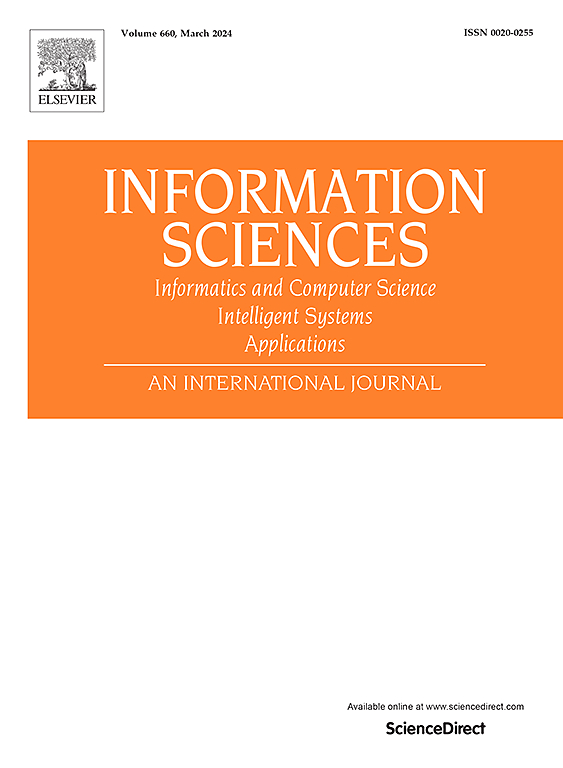社会语义增强的双意图超图协同过滤
IF 6.8
1区 计算机科学
0 COMPUTER SCIENCE, INFORMATION SYSTEMS
引用次数: 0
摘要
推荐系统通过建模用户与物品的交互来提供个性化的推荐,在这种情况下,理清用户的意图对于提高推荐的准确性至关重要。现有的意图建模方法旨在捕获细粒度的意图表示,但它们面临两个挑战:1)忽视了社会语义对细粒度意图建模的影响;隐式数据稀疏性和意图冗余限制了意图表征。为了解决这些挑战,我们提出了一个社会语义增强双意图超图协同过滤(SDIHGCF)模型。具体来说,SDIHGCF构建了超图结构来保持用户、项目和组之间的社会语义。它从社会和兴趣的角度对特征进行编码,以实现用户和项目的表示,这些表示整合了个人意图(表示私人偏好)和集体意图(表示整体意识)。为了减轻数据稀疏性和意图冗余,其中一个意图可以由其他意图表示,我们使用图对比正则化来强制用户,项目,意图和交互之间的一致性。此外,提出了双向对比学习损失来增强意图对齐。在四个数据集上的实验表明,SDIHGCF优于现有方法,为细粒度意图建模提供了新的见解。本文章由计算机程序翻译,如有差异,请以英文原文为准。
Social-semantic enhanced dual-intent hypergraph collaborative filtering
Recommender systems provide personalized recommendations by modeling user–item interactions, where disentangling users’ intents is critical for improving recommendation accuracy. While existing intent modeling methods aim to capture fine-grained intent representations, they face two challenges: 1) Neglecting the influence of social semantics on modeling fine-grained intents; 2) Implicit data sparsity and intent redundancy limiting intent characterization. To tackle these challenges, we propose a Social-Semantic Enhanced Dual-Intent Hypergraph Collaborative Filtering (SDIHGCF) model. Specifically, SDIHGCF constructs hypergraph structures to preserve social semantics among users, items, and groups. It encodes features from both social and interest perspectives to achieve user and item representations that integrate individual intent, which signifies private preferences, and collective intent, which denotes overall awareness. To mitigate data sparsity and intent redundancy, where one intent can be represented by others, we use graph contrastive regularization to enforce consistency among users, items, intents, and interactions. Additionally, a bidirectional contrastive learning loss is proposed to enhance intent alignment. Experiments on four datasets demonstrate that SDIHGCF outperforms existing methods, offering novel insights into fine-grained intent modeling.
求助全文
通过发布文献求助,成功后即可免费获取论文全文。
去求助
来源期刊

Information Sciences
工程技术-计算机:信息系统
CiteScore
14.00
自引率
17.30%
发文量
1322
审稿时长
10.4 months
期刊介绍:
Informatics and Computer Science Intelligent Systems Applications is an esteemed international journal that focuses on publishing original and creative research findings in the field of information sciences. We also feature a limited number of timely tutorial and surveying contributions.
Our journal aims to cater to a diverse audience, including researchers, developers, managers, strategic planners, graduate students, and anyone interested in staying up-to-date with cutting-edge research in information science, knowledge engineering, and intelligent systems. While readers are expected to share a common interest in information science, they come from varying backgrounds such as engineering, mathematics, statistics, physics, computer science, cell biology, molecular biology, management science, cognitive science, neurobiology, behavioral sciences, and biochemistry.
 求助内容:
求助内容: 应助结果提醒方式:
应助结果提醒方式:


